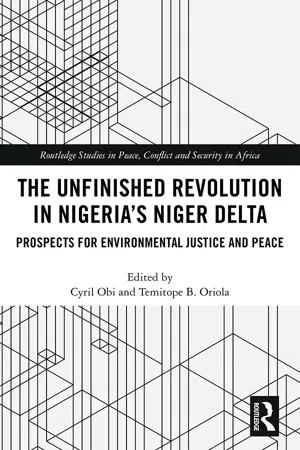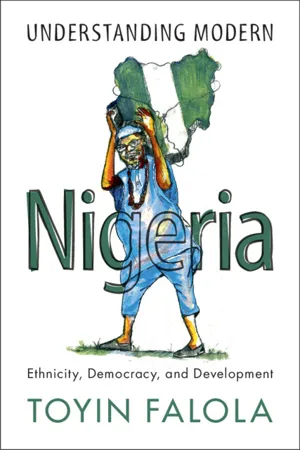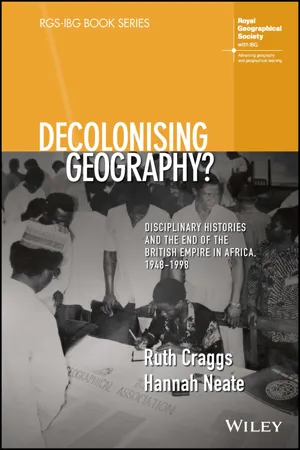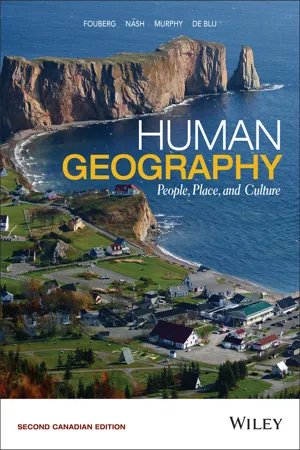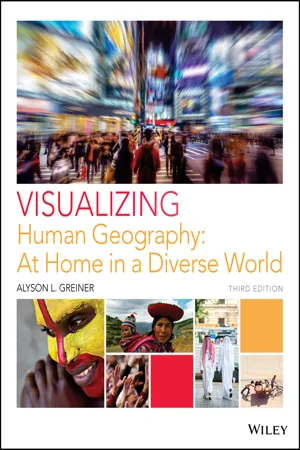Geography
Nigeria Development
Nigeria's development refers to the economic, social, and infrastructural progress of the country. It encompasses efforts to improve living standards, reduce poverty, and enhance the overall well-being of its population. Nigeria's development is influenced by factors such as natural resources, governance, and regional disparities.
Written by Perlego with AI-assistance
Related key terms
1 of 5
7 Key excerpts on "Nigeria Development"
- eBook - ePub
The Unfinished Revolution in Nigeria's Niger Delta
Prospects for Environmental Justice and Peace
- Cyril Obi, Temitope Oriola, Temitope B. Oriola(Authors)
- 2018(Publication Date)
- Routledge(Publisher)
Existing data on the state of social and human development in an oil-endowed Nigeria, particularly since 1995, paints a very disappointing picture. The situation is not any better, and in some cases worse, in the Niger Delta region where on many measures, development appears to have been in reverse. As it is, the fortune of the Niger Delta region appears inextricably linked to Nigeria’s progress on growth and human development. Indeed the region may not be able to attain a measurably high and sustainable social and human developmental state as long as Nigeria’s performance itself remains dismal. The factors underlying Nigeria’s poor performance also largely define the developmental experience in the Niger Delta region.This chapter is organized into five sections that compare the state of human and socioeconomic development in Nigeria drawing on the strategic place of the Niger Delta with those of oil-producing countries. It critically examines the factors explaining diversity in outcomes, and proffers steps that may help redress the gaps in the situation. The first section provides a background to the chapter. The second section summarizes the current state of the literature on resource-abundance/dependence and socioeconomic performance. This is followed up with a comparison of the performance of Nigeria in relation to a sample of oil-producing countries and progress made in relation to development in the Niger Delta region over the last 25–30 years. These analyses, which are contained in the third section, are strongly rooted in the theoretical and empirical literature. In the fourth section, the chapter draws on some findings from the empirical evidence and discusses their implications. The final section concludes with some recommendations.Overview of literature
Abundant natural resources can be of great value to societies. However, the empirical evidence from the developmental experiences of resource-rich countries has been mixed (Gylfason, 2001; Mehlum et al., 2006; Atsushi, 2007; Boschini et al., 2007; Andersen and Aslaksen, 2008; Torvik, 2009; Barma et al - eBook - PDF
Understanding Modern Nigeria
Ethnicity, Democracy, and Development
- Toyin Falola(Author)
- 2021(Publication Date)
- Cambridge University Press(Publisher)
4 For some works on the Nigerian economy since independence, see, among others, Toyin Falola, Economic Reforms and Modernization in Nigeria (Kent: Kent State University Press, 2004); Charles Jarmon, Nigeria: Reorganization and Development since the Mid-Twentieth Century (Leiden: E. J. Brill, 1988); Jeremiah I. Dibua, Modernization and the Crisis of Development in Africa: The Nigerian Experience (Aldershot: Ashgate, 2006); K. Aaron Kiipoye and Dawari George, eds., Placebo as Medicine: The Poverty of Development Intervention and Conflict Resolution Strategies in the Niger Delta Region of Nigeria (Port Harcourt: Kemuela Publications, 2010); Nwafejoku Okolie Uwadibie, Decentralization and Economic Development in Nigeria: Agricultural Policies and Implementation (Lanham: University Press of America, 2000); and Tom Forrest, Politics and Economic Development in Nigeria (Boulder, Colorado: Westview Press, 1993). 5 Ayodele Jimoh, The Nigerian Governance and Corruption Survey (Ilorin: University of Ilorin, 2004). Introduction 315 Figure 13.1 A small-scale village market where fresh farm produce is sold on a daily basis. Figure 13.2 A young girl hawking solid pap (eko) wrapped in leaves for breakfast consumption. 316 Environment and Sustainable Development in abject poverty, 85 percent of urban citizens live in over-crowded spaces, 40 percent of the population lacks access to clean water, and 60 percent of youths are unemployed. Nigerian politicians have not only shortchanged future generations through reckless disregard for the environment but have neglected the basic needs of the present generation by failing to sufficiently address widespread poverty and malnutrition. Nigeria is part of the geographic space of underdevelopment, often termed the developing or underdeveloped world, or more generically as the Third World. - eBook - ePub
- Ruth Craggs, Hannah Neate(Authors)
- 2023(Publication Date)
- Wiley(Publisher)
The chapter begins with a discussion of the rise of applied geography for development before moving on to discuss how geography departments were tasked with training development experts through their teaching programmes. Here Ghanaian and Tanzanian changes to teaching are explored, with the latter providing an example of potentially radical curriculum transformation later being domesticated into a less critical, more technocratic ones aimed at producing development experts rather than critiquing the ideology, policy, and practice of development. The rest of the chapter explores how geographers proactively set out to support new national governments with development issues, aiming to produce policy-relevant research. This work, sometimes as government consultants, contributed to national censuses, spatial planning, land-use and rural development, large infrastructure projects, and the development of new capital cities. In this work, geographers were involved with some of the most ambitious, but also controversial, development projects of the period in Africa: such as building Nigeria’s new capital in Abuja and ‘villagisation’ in Tanzania. As the next chapter highlights, they were also involved in planning the new ‘homelands’ – known critically as bantustans – created for Black South Africans under apartheid.Geography and African Development
What sort of geography was required for development? Speaking in 1968 on the theme of ‘Geography and African Development’, Simeon Ominde described the evolution of the new geography departments of East Africa as they attempted to produce the knowledge and skills relevant for new nations. The Department of Geography at Dar es Salaam, founded in 1965 had set out:an outline of research topics in both physical and human fields that underline a clear awareness of the development role of the discipline. In the expanding programme of research covering land use, land classification and regional planning, population problems, problems of water resources, political geography, biogeography and geomorphology, the department is stretching its resources to realize its role as regards the urgent practical needs of the nation.(1971a, p. 5)Geography was envisaged as of use in two main ways: providing data to inform government policy making, and providing students trained in planning and resource questions to fulfil these roles in the postcolonial states (Darkoh 1981). In this way it could contribute directly to the first of the United Nation’s key proposals for action in the so-called development decade of the 1960s: ‘(i) The more systematic survey, development and utilization of physical and human resources in underdeveloped countries.’2 According to the Ghanaian geographer Elizabeth Ardayfio-Schandorf, it was ‘human geography appraisals and that applied aspect of geography that relate[d] to development’.3 - Maryann Ijeoma Egbujor(Author)
- 2021(Publication Date)
- Peter Lang Group(Publisher)
3. An Overview of the Nigerian Context This chapter deals with the reality of the Nigerian context. In essence, this concerns the political and media system. It also outlines the geographic, demo- graphic and social dimensions as well as the political context, socio-economic development and human rights in Nigeria. Essential for this research work are also aspects such as the educational sector, the status of journalism training and its different practices. Ultimately, this amounts to a historical overview of the Nigerian media landscape. Given the quest to attain journalism standards, this research advances the possibilities for the professionalization of journalism in the light of CSE and CV to justify their relevance for quality journalism in Nigeria. The advent of Christianity in Nigeria brought outstanding development in the areas of jour- nalism and education. Although other religions such as Muslims and traditional religions emerged before Christianity, Christian religion permeated the country with many establishments, namely schools and professional investments. As a multi-religious, ethnic and cultural nation, the Christian principles remarkably intersect with some social norms and CV. Informed by these empirical discov- eries, this study argues that standard professionalization fosters human dignity, democracy and improves the growth of society. Bearing in mind the state of journalism in the context of socio-economic and current political development, this section reveals the historical overview of the Nigerian media landscape. 3.1. Historical, Geographic and Political Context Nigeria operates a federal republic with a presidential system. The country is situated in the Western axis of Africa with a total land capacity covering over 923,768 square kilometres and is known as the Giant of Africa. 389 It borders four other countries from the Gulf of Guinea between Chad, Benin, Niger and Cameroon.- eBook - PDF
- Erin H. Fouberg, William G. Moseley(Authors)
- 2017(Publication Date)
- Wiley(Publisher)
Geographers who study development generally avoid narrowly defining development as economic growth. Instead, they focus on how economies change over time, the implications of these changes for human well-being, and the connections between development in one place and another. This broad conception of development in geography encompasses a lot of different perspectives within the discipline. This section of the chapter examines ideas about development within geography and how ideas have changed over time. Development as Modernization After World War II, colonies in Asia and Africa gained indepen- dence, and the number of states in the world quickly grew. Scholars in geography and other disciplines, in an attempt to advise newly independent countries about how to develop, sought to explain why some countries developed economically while others did not. Scholars looked for steps or stages that the newly independent countries could follow. This group of theories, often collectively referred to under the umbrella term modernization, suggested that the European industrial econ- omy was the ideal or pinnacle stage of development. These theorists argued that with the right combination of capital, know-how, and attitude, economic growth would pro- ceed down a certain path already forged by the wealthy coun- tries of the world. They posited that countries would make a transition from traditional to modern states. While these theories were most popular in economics, they influenced thinking in geography and other disciplines as well. FIGURE 3.6 Rostow’s ladder of development. One way to represent Rostow’s modernization theory is as a ladder of development, with each rung representing one of his five stages: (1) Traditional or preindustrial, (2) preconditions for take-off, (3) take-off into self-sustaining growth, (4) drive to maturity, and (5) the age of mass consumption. - eBook - PDF
Human Geography
People, Place, and Culture
- Erin H. Fouberg, Alexander B. Nash, Alexander B. Murphy, Harm J. de Blij(Authors)
- 2015(Publication Date)
- Wiley(Publisher)
To say a country is developing, then, is to say that progress is being made in tech- nology, production, and socio- economic welfare. This popular contemporary notion of development dates back to the time of the Industrial Revolution and the idea that technology can do much to improve people’s lives. To be sure, advances in technol- ogy have given people the ability to produce more food, create new products, and accrue material wealth. At the same time, however, a near-exclusive focus on economic considerations has made the notion of development, as it is currently understood, a narrow and sometimes controversial indicator of the human condition. Indeed, in more recent years there has been growing recognition that these things do not necessarily bring happiness, social stability, or environmental sustainability—and, thus, that our conceptualization of what development really means, and how we pursue it, should be modified accordingly. Developing With respect to a country, making progress in technology, production, and socio-economic welfare. KEY QUESTIONS FOR CHAPTER 11 1. How is development defined and measured? 2. How does geographical situation affect development? 3. What are the barriers to, and the costs of, development? 4. How do political and economic institutions influence uneven development within states? 312 CHAPTER 11 Development The economic and social geography of the contemporary world is a patchwork of almost inconceivable contrasts. On their shifting fields carved out of equatorial American and African forests, farmers grow root crops using ancient methods and rudimentary tools (Figure 11.2). On the Great Plains of North America, in the Ukraine, and in eastern Australia, farm- ers use expensive, modern machines to plough the land, seed the grain, and harvest the wheat. - eBook - PDF
Visualizing Human Geography
At Home in a Diverse World
- Alyson L. Greiner(Author)
- 2017(Publication Date)
- Wiley(Publisher)
4. Identify geographic and institutional factors that can affect development. O ne of the axioms of development is that, no matter how it is mea- sured, it is geographically uneven. Human geographers study the differences in development from one place or region to another as well as the social and environmental consequences of development. When comparing countries or regions on the basis of their levels of development, different terms and classifica- tions are used such as high-, middle-, and low-income coun- tries, or more developed and less developed countries. The terms First World and Third World are problematic because they reinforce a view that less developed countries are in- trinsically inferior. Alternatively, Global North and Global South refer to richer and poorer regions in the world, but the terms are not strictly geographically accurate. India, for example, is usually classified as a country in the Global South even though it is in the northern hemisphere. For a long time, the terms developed and developing have been used to categorize countries. These terms are not strictly defined, but general usage recognizes Austra- lia, New Zealand, Japan, Europe, Canada, and the United States as developed. Recently, however, the usefulness of these terms has also been questioned. Part of the concern is that these terms mask a great deal of variation within both categories. Even within so-called “developed” coun- tries, much work remains to be done to ensure a better quality of life for people. The most important point here is that we recognize the limitations of such categories. The study of development is always a normative project. The term normative refers to the establishment of standards, or norms, to help measure the quality of life and economic prosperity of groups of people. Conven- tional views of development are strongly associated with normative ideas of progress, advancement, and social betterment.
Index pages curate the most relevant extracts from our library of academic textbooks. They’ve been created using an in-house natural language model (NLM), each adding context and meaning to key research topics.
